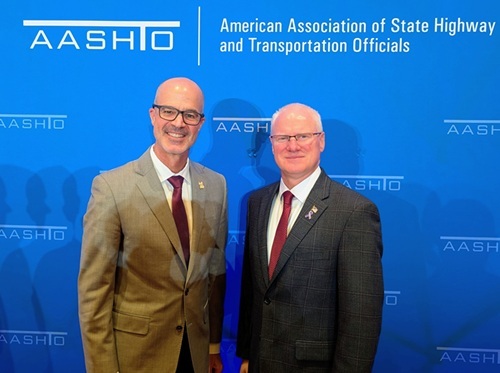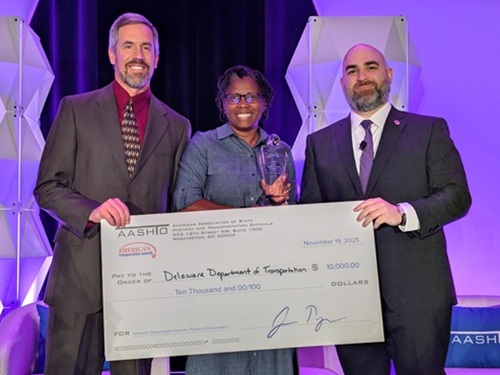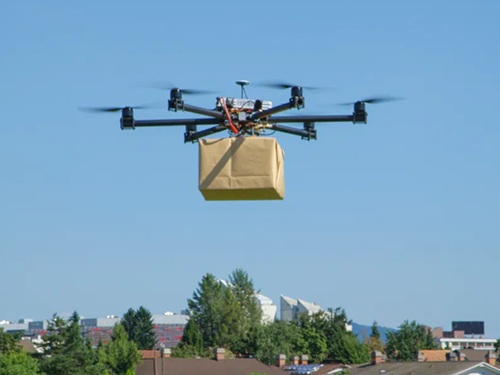The American Association of State Highway and Transportation Officials recently commented on a notice of proposed rulemaking or NPRM unveiled by the U.S. Department of Transportation in August regarding “Beyond Visual Line of Sight” or BVLOS operations to aid in the safe integration of unmanned aircraft systems (UAS) or drones into the national airspace system.
[Above photo by the FAA]
AASHTO offered its comments in a letter addressed to the Federal Aviation Administration and Transportation Security Administration, stressing that “normalizing” BVLOS operations will enable state departments of transportation to use drones to conduct bridge safety inspection, emergency response, surveying and mapping, construction support, and traffic monitoring in “safer, streamlined, and more cost-effective” ways.

“However, AASHTO recognizes [the proposed rule] is largely designed for commercial BVLOS operations – and there are aspects of it that do not align with the regular use of UAS by state DOTs for the public benefit,” the organization stressed in its letter. Specifically, AASHTO said existing BVLOS waivers “that have proven safe and effective” will no longer be allowed once the new rule becomes law.
“State DOT use of UAS differs fundamentally from commercial BVLOS operations,” the group said. “Many short-distance BVLOS operations should be allowed to continue to be conducted safely with minimal new regulations.”
Additionally, the NPRM defines “civic interest operations” as those conducted under contract for public agencies, thus directly applying to contractors working for state and local agencies rather than the public entities themselves – leaving state DOTs and public agencies without clear guidance.
“At a minimum, AASHTO requests FAA revise the definition of civic interest to add provisions to specifically include state and local public agencies,” AASHTO said.
AASHTO added that staffing requirements proposed by the new rule appear to be more focused on a corporate approach for large-scale BVLOS operations with no requirements to hold a remote-pilot certificate or other FAA-issued credential.
“The mandate for new personnel with added costs for public agencies in addition to the lack of any industry-wide standard training is of concern to state DOTs,” the group said. “AASHTO recommends that all [drone] operators still maintain a Remote Pilot Certification as a baseline demonstration of competency, even if not formally required.”
In terms of technical details within the proposed rule, AASHTO recommended that permit drones be allowed to fly up to 100 feet near “shielded facilities” without additional authorization; with the definition of “shielded facilities” expanded from utilities, pipelines, railroads, and bridges to also include roadways, highways, active construction sites, and ports.
Finally, AASHTO addressed the new “airworthiness acceptance” process proposed by the rule in place of traditional certification.
“The absence of a formal inspection and certification pathway for larger UAS raises safety concerns,” the group said. “This approach places significant reliance on manufacturers to define aircraft capabilities and sign off on repairs which may create cost burdens by centralizing all repair authority with manufacturers without FAA oversight. Stronger FAA involvement in validation of compliance is recommended, especially for larger UAS vehicles.”
 Top Stories
Top Stories
New AASHTO Leadership Elected at 2025 Annual Meeting
November 21, 2025 Top Stories
Top Stories

